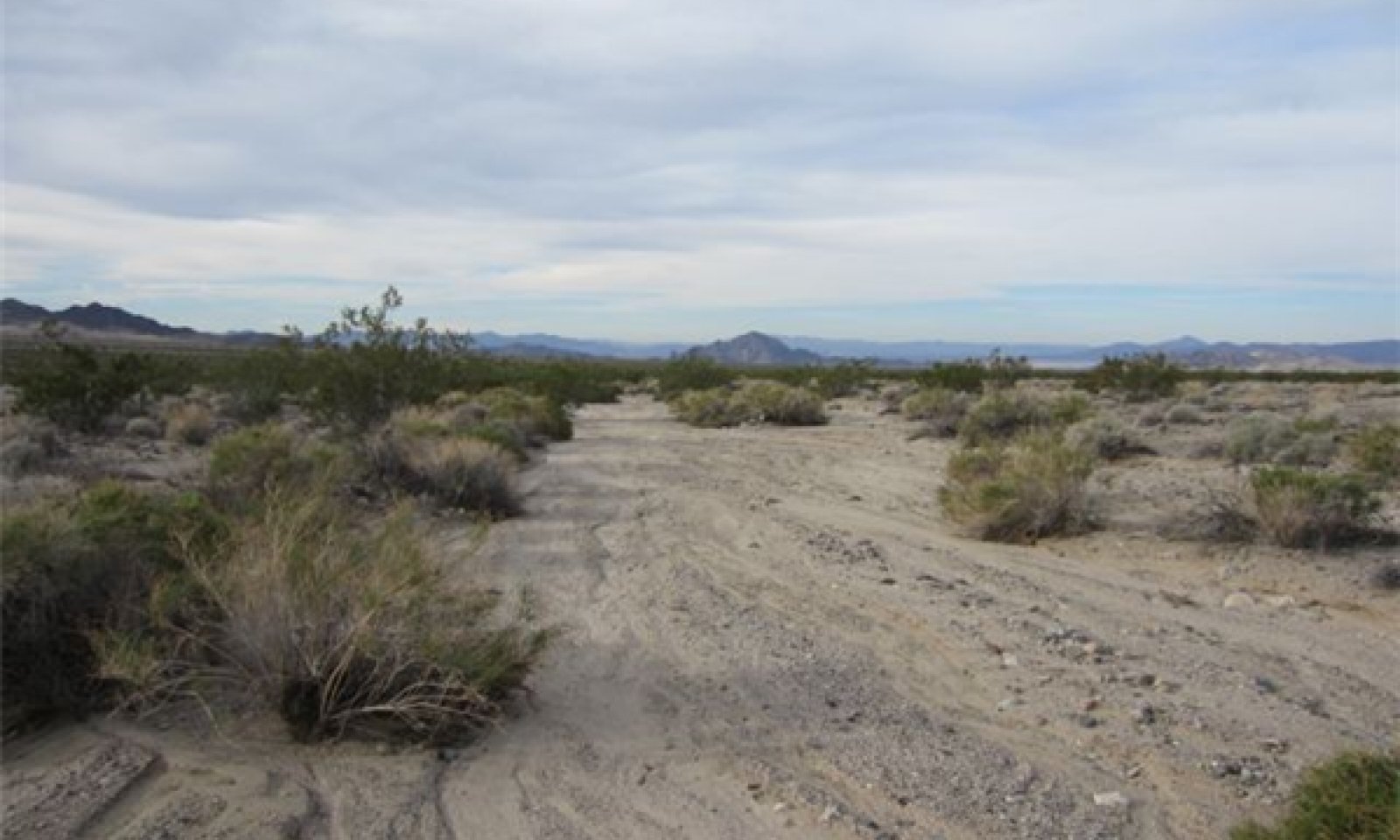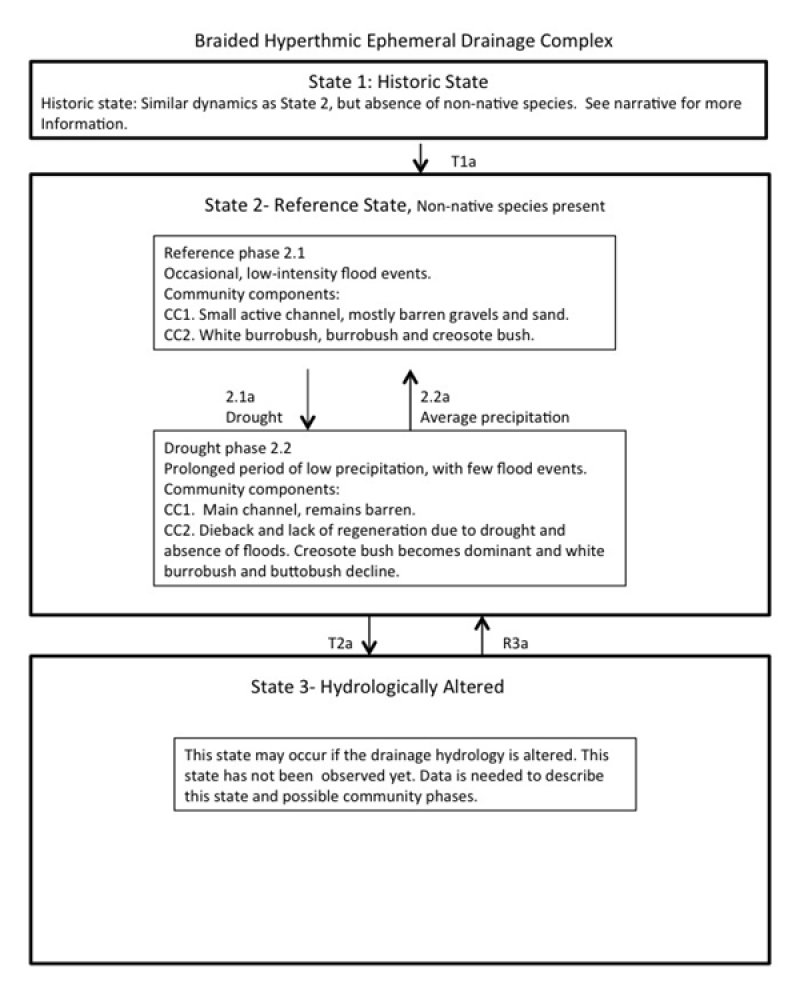

Natural Resources
Conservation Service
Ecological site R030XB011CA
Braided Hyperthmic Ephemeral Drainage Complex
Last updated: 2/18/2025
Accessed: 05/11/2025
General information
Provisional. A provisional ecological site description has undergone quality control and quality assurance review. It contains a working state and transition model and enough information to identify the ecological site.
MLRA notes
Major Land Resource Area (MLRA): 030X–Mojave Basin and Range
MLRA Statement:
Major Land Resource Area (MLRA) 30, Mojave Desert, is found in southern California, southern Nevada, the extreme southwest corner of Utah and northwestern Arizona within the Basin and Range Province of the Intermontane Plateaus. The climate of the area is hot (primarily hyperthermic and thermic; however at higher elevations, generally above 5000 feet, mesic, cryic and frigid) and dry (aridic). Elevations range from below sea level to over 12,000 feet in the higher mountain areas found within the MLRA. Due to the extreme elevational range found within this MLRA, land resource units (LRUs) were designated to group the MLRA into similar land units.
LRU notes
This LRU (designated by ‘XD’) is found on the eastern side of California and much of the low-elevations of Nevada and northwestern Arizona. Elevations range from 400 to 2200 feet on average, but may be found up to 3600 feet on southern exposures. Precipitation ranges from 1 to 6 inches per year, but averages between 2-4 inches. This LRU is characterized primarily by the extreme aridity, hot air temperatures, hyperthermic soil temperatures, and low vigor/low stature of widely spaced vegetation. Temperatures can reach over 110 degrees Fahrenheit for several weeks in July and August. Summer precipitation falls between July and September, ranging from 20-33% in the form of rain, and winter precipitation falls starting in November and ends between February and March, ranging from 56-70%, also mostly in the form of rain. Vegetation is primarily small, widely-spaced, low-producing creosote bush (Larrea tridentata), burrobush (Ambrosia dumosa), and brittlebush (Encelia farinosa).
Ecological site concept
This ecological site occurs on inset fans and channel margins of braided, small (1st or 2nd order) ephemeral drainageways on hyperthermic fan aprons. Drainageways intermittently flood during high precipitation events, but since they occur on fan aprons away from the base of mountains, flow is relatively diffuse. Soils are very deep and gravelly.
Intermittent flooding provides soil disturbance and additional moisture that supports a more productive and diverse plant community than surrounding upland fan aprons, but hyperthermic temperatures, low precipitation, and relatively diffuse flow keep the plant community relatively simple and of lower production than larger drainage systems, or drainage systems receiving greater precipitation. White burrobush (Hymenoclea salsola) is a dominant plant, and burrobush (Ambrosia dumosa) and creosote bush (Larrea tridentata) are important secondary species. Desert senna (Senna armata) is often present.
This site is part of group concept R030XB187CA.
Associated sites
| R030XD014CA |
Hyperthermic Sandy Plains This ecological site occurs on adjacent sand sheets. |
|---|---|
| R030XD015CA |
Hyper-Arid Fans This ecological site occurs on adjacent upland fan aprons with very rare to rare flooding. |
Similar sites
| R030XY136CA |
Dry Wash This ecological site occurs on larger drainageways (order 2 to 3), and occurs in valleys draining mountains, or close to the base of mountains. Flow is more concentrated, and channels are deeper and more complex. Species composition is similar, but a greater diversity of species and plant communities is present. |
|---|---|
| R030XD015CA |
Hyper-Arid Fans This ecological site occurs on fan aprons with very rare to rare sheet flooding. It is not associated with drainageways. Creosote bush and burrobush are the dominant species. If white burrobush or desert senna are present, they are confined to a patch of localized disturbance. |
| R030XY223CA |
Dry Wash This ecological site occurs on similar diffuse, braided channels on fan aprons, but it occurs on lower fan positions at lower elevations. More arid conditions, finer soil textures, and greater salinity increase habitat suitability for cattle saltbush (Atriplex polycarpa) which is a dominant species on this site. White burrobush is trace if present. |
Table 1. Dominant plant species
| Tree |
Not specified |
|---|---|
| Shrub |
(1) Hymenoclea salsola |
| Herbaceous |
Not specified |
Click on box and path labels to scroll to the respective text.

